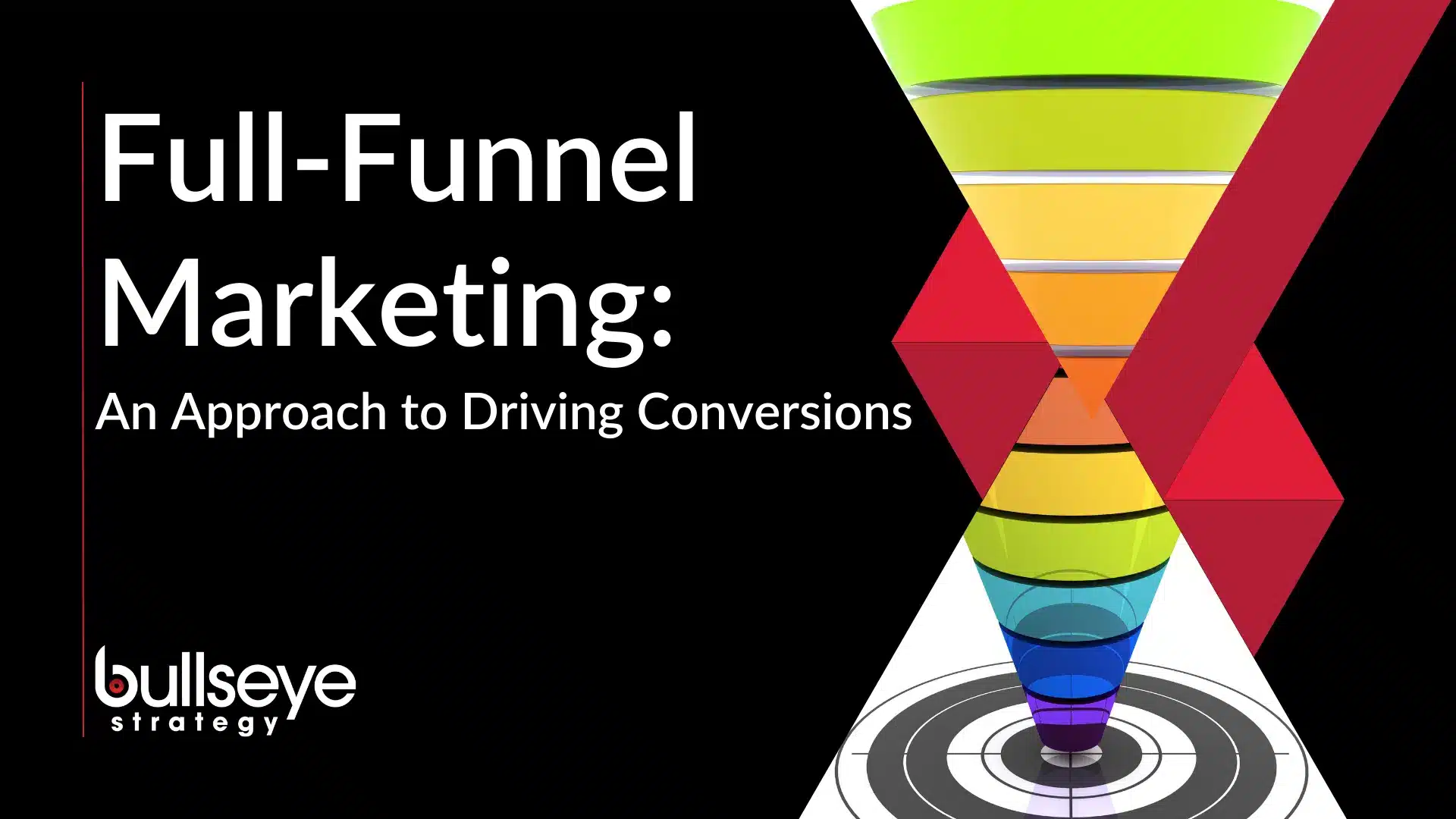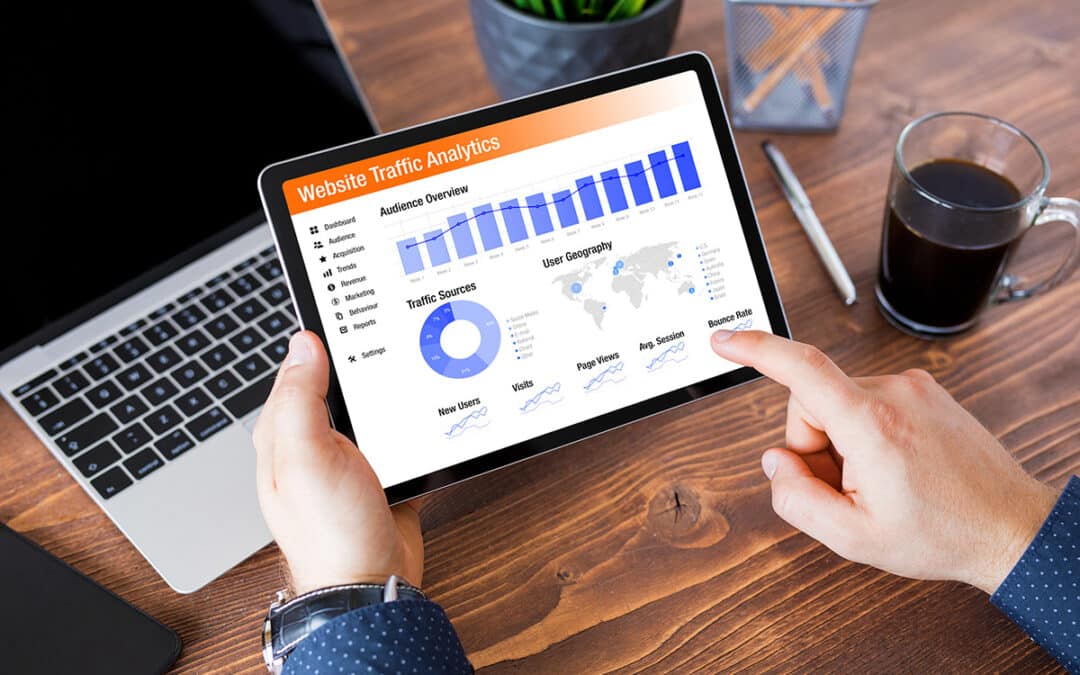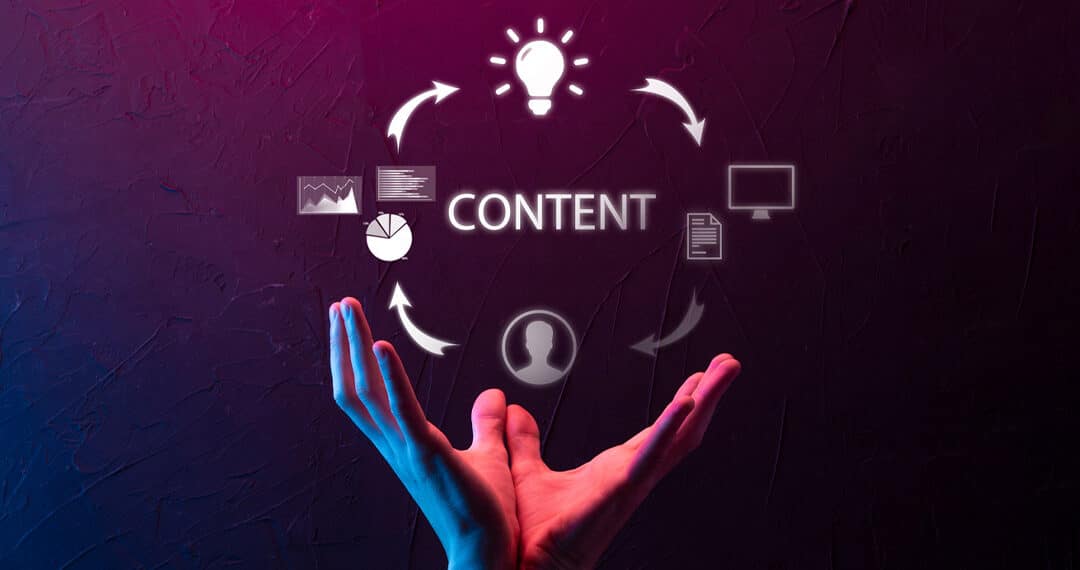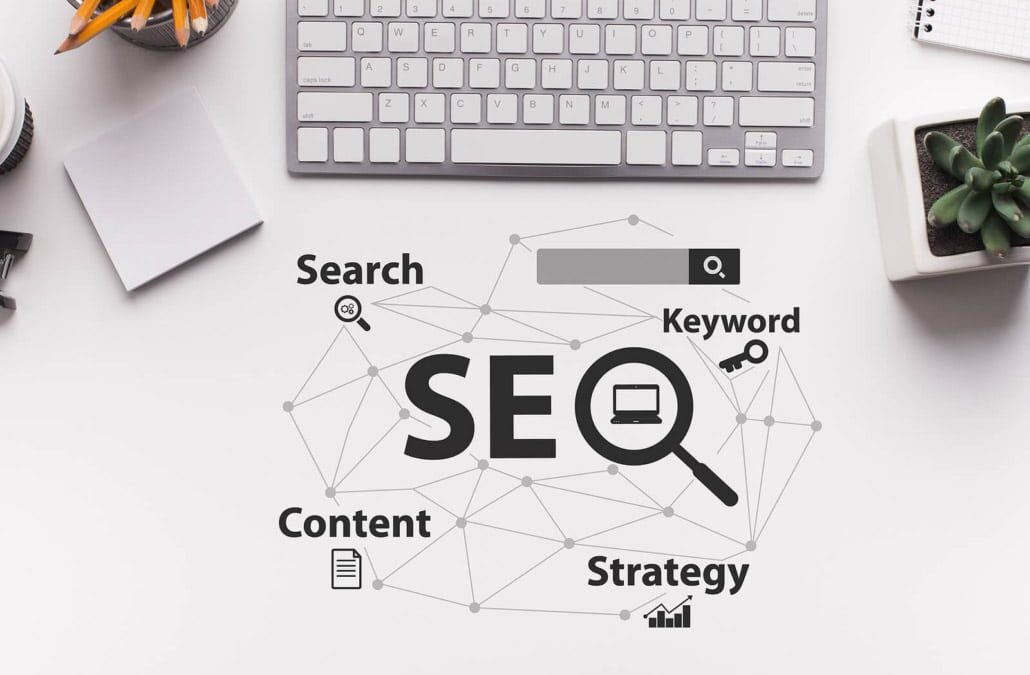The customer journey is far from linear, with dozens of mediums to research brands, compare products, and make a purchase. The sheer number of available touchpoints to interact with a potential customer can make it difficult for marketers to map a buyer’s exact path to conversion — which is why we leverage a full-funnel marketing approach.
A full-funnel marketing approach creates relevant content and dedicated digital marketing efforts to target customers based on their stage in the sales funnel. It allows marketers to laser focus on each stage of the buyer’s journey with purposeful campaigns that allocate resources to channels with the highest propensity for success.
Keep reading to learn how full-funnel marketing can help marketers better conceptualize the path to purchase and support customers at each funnel stage with the appropriate marketing materials.
What is Full-Funnel Marketing and Why is it Important?
Full-funnel marketing is a technique that enables marketers to appeal to buyers at each stage of the customer journey. Rather than focus solely on conversions, a full-funnel marketing approach creates dedicated campaigns to build relationships with potential customers and raise brand awareness.
A marketing funnel, sometimes referred to as a sales funnel, illustrates the most straightforward journey a potential customer could take to reach a conversion. With the largest footprint, the top of the marketing funnel represents potential buyers at various points of the awareness stage. In contrast, the narrow bottom of the funnel tapers to include only those contemplating a conversion.
A full-funnel marketing approach begins at the widest part- the top of the funnel to capture as many leads as possible. But the more the funnel narrows, the more focused marketing efforts become. In this way, marketers can directly target the most qualified audience with the highest propensity to convert.
This full-funnel approach allows marketers to craft specific campaigns for each funnel stage, including variations in messaging, creative, and marketing channels that help to meet potential customers where they’re at in the buying process. In addition, this approach enables marketers to align campaign objectives with the appropriate stage in the funnel for the best use of a marketing budget and resources.
Creating a Full-Funnel Marketing Strategy
A marketing funnel condenses the numerous touchpoints involved in a customer’s journey into three distinct stages — awareness, consideration, and conversion. Each stage is uniquely essential. However, not all marketers succeed in tailoring messaging to market to each properly. For example, while 69% of marketers1 create content for the first stage of brand awareness, only 20% create content for those in the final conversion stage.
A thorough understanding of where prospects fall in the funnel is essential to tailor your digital marketing objectives to each audience appropriately. Take a look at the three stages of a full-funnel marketing strategy and which techniques to prioritize for each.
What are the 3 Stages of Full-Funnel Marketing?

Top-of-Funnel (TOFU): Awareness + Interest
The top-of-funnel (TOFU) represents potential customers in the awareness stage. The widest part of the funnel is the top which includes a vast audience with varying search intent. Therefore, many leads won’t have an immediate need for your products or solutions. As such, your objective in this stage is to reach the broadest possible audience wherever they are, and provide engaging educational or entertaining content.
With a broad audience, TOFU campaigns can introduce your brand and demonstrate its value, position your content as a beneficial resource, and create valuable customer experiences. In addition, TOFU marketing helps raise brand awareness to get your company on the radar, drive interest in your unique solutions, and build trust with potential customers to lead them further down the funnel.
Types of strategies to prioritize for your top-of-funnel audience include:
- Content marketing initiatives to educate and entertain —
-
- Blog posts
- Newsletters
- Infographics
- Service pages
- Product descriptions
- Whitepapers and e-books
- Educational email campaigns
- Social media marketing initiatives to inform and intrigue —
-
- Social media posts
- Paid advertisements
- Shoppable social media feeds
- Campaigns to drive brand awareness —
- Events featuring your products
- Public relations campaigns
- Influencer marketing
- Media buying
- Display ads
Middle-of-Funnel (MOFU): Consideration + Intent
The middle-of-funnel (MOFU) represents potential customers in the consideration stage. These leads have flowed from the top-of-funnel and have since defined their problem and narrowed their solutions. Now, they’re beginning to compare brands, products, and services, and your company has become a possible consideration.
Unlike TOFU, potential customers in the MOFU funnel stage represent a much smaller audience of more qualified leads; they use targeted search queries to investigate particular products or brands. As such, you’ll need to tailor your brand campaigns to provide as much information as possible to help encourage a purchase decision in your favor.
Your MOFU campaigns should focus on highlighting your brand’s expertise, clarifying your differentiators from the competition, and giving leads the confidence they need to move onto the next stage of their buyer’s journey. Strategies to prioritize for a MOFU audience include:
- Long-tail keyword strategies to capture traffic —
-
- Paid search ads, including Bing and Google Ads
- SEO-optimized product, collection, and service pages
- Frequently Asked Question (FAQ) pages and knowledge libraries
- Retargeting initiatives to remain top of mind —
-
- Product or service-oriented email campaigns
- Retargeting ads across search engines and social media platforms
- Highly educational content to greater inform leads —
- Webinars
- How-to guides
- Templates and resources
- Video product demonstrations
- Downloadable e-books and whitepapers
Bottom-of-Funnel (BOFU): Evaluation + Purchase
The bottom-of-funnel (BOFU) represents potential customers in the conversion stage. These are highly-qualified leads who engaged with touchpoints in your MOFU strategy and are now on their way to making a purchase. These more lucrative leads are searching for something extra to convert: extra confidence, extra benefits, or urgency.
You can anticipate that BOFU leads focus on branded search, evaluating product-specific queries, and reviewing or testimonial-related keywords. They’re seeking the assurance that your product or service will deliver the maximum results or return on investment. So, your lower funnel tactics should reinforce why your brand is better than the competition.
Your BOFU marketing strategy must maintain the brand expertise you began to outline with your MOFU campaigns. But this time, tailor the conversion to a lead’s individual needs. Objectives to prioritize for your bottom-of-funnel leads include:
- Initiatives to highlight brand value —
-
- Case studies
- Testimonials
- Customer features
- Comparison charts
- Strategies to personalize the buying experience —
-
- Consultations
- Demonstrations
- Estimates and quotes
- Video product walk-throughs
- Incentives to make an immediate conversion —
- Promotions
- Extended warranties
- Savings calculators
What is a Full-Funnel Marketing Strategy Example?
Overview
Azure Paradise, a fictional luxury resort located on a pristine, secluded island, seeks to attract affluent travelers seeking an exclusive, high-end vacation experience. The resort boasts luxurious accommodations, private beaches, gourmet dining, spa services, and personalized guest experiences. To market Azure Paradise effectively, a comprehensive full-funnel marketing strategy was developed to engage potential guests at every stage of their journey, from awareness to loyalty.
Top of the Funnel (TOFU): Awareness and Reach
Objective: Increase brand awareness and reach potential guests who are in the early stages of planning a luxury vacation.
Content Marketing: Publish visually appealing blog posts and articles on luxury travel trends, top destinations for affluent travelers, and wellness retreats. These pieces are optimized for SEO to attract organic traffic.
Social Media Advertising: Utilize visually stunning imagery and videos of the resort on platforms like Instagram and Facebook to capture the target audience’s attention. Influencer partnerships with luxury travel influencers to share their experiences at Azure Paradise.
Public Relations: Leverage media relations to secure features in luxury travel magazines, online publications, and lifestyle sections of national newspapers.
Middle of the Funnel (MOFU): Consideration and Engagement
Objective: Engage interested prospects and nurture their interest in considering Azure Paradise for their next vacation.
Email Marketing: Develop a series of emails for subscribers that showcase exclusive offers, guest testimonials, and detailed descriptions of the resort’s amenities and unique experiences. Use segmentation to personalize messages based on interests (e.g., spa enthusiasts and gourmet food lovers).
Retargeting Campaigns: Implement retargeting ads on social media and Google to re-engage visitors who have interacted with the website but have not made a booking. Ads highlight unique selling propositions and limited-time offers.
Interactive Content: Create interactive content, such as virtual tours of the resort, an online quiz to discover your ideal vacation experience at Azure Paradise, or live Q&A sessions with the concierge team on social media.
Bottom of the Funnel (BOFU): Conversion
Objective: Convert interested prospects into guests by making the booking process seamless and enticing.
Booking Incentives: Offer exclusive packages or added value for direct bookings through the website, such as a complimentary spa session or a private dining experience on the beach.
Testimonials and Reviews: Highlight positive guest reviews and testimonials prominently on the website and in marketing materials to build trust and credibility.
Personalized Follow-up: Use personalized email or SMS follow-ups for users who abandoned the booking process, offering assistance or answering any questions they might have.
Post-Purchase: Loyalty and Advocacy
Objective: Foster loyalty among guests and encourage them to advocate for the resort.
Loyalty Program: Introduce a loyalty program that rewards repeat guests with perks, such as room upgrades, late check-outs, and exclusive access to events.
Referral Program: Implement a referral program that incentivizes guests to refer friends and family with benefits for both the referrer and the referred.
Post-Stay Engagement: Send personalized thank you messages post-stay, along with requests for feedback. Share exclusive offers for their next stay or invite them to share their experience on social media with a unique hashtag to broaden their reach.
Conclusion
The full-funnel marketing strategy for Azure Paradise Luxury Resort is designed to guide potential guests through every stage of their journey, from initial awareness to loyal advocacy. By leveraging a mix of digital marketing tactics tailored to each funnel stage, the resort aims to attract, engage, convert, and retain affluent travelers seeking an unparalleled luxury vacation experience.
Full-Funnel Marketing Essentials
It is one thing to understand what a marketing funnel is and the different strategies you can implement. Still, knowing how to approach a full-funnel marketing strategy appropriately is another. So here are a few essential tips to keep in mind for a full-funnel optimization of all marketing efforts.
KPI Alignment and Measurement
The only way for a full-funnel marketing campaign to be successful is to understand your goals and how you will achieve and measure them. Therefore, for each objective in each funnel stage, you must establish key performance indicators (KPI) to track over time and determine a way to quantify success, such as a 10% increase in click-through rates for your MOFU paid ads.
Other elements of your full-funnel approach, such as brand awareness in the upper funnel, can be more challenging to track. For KPIs that are best aligned with metrics you can track over time, consider these methods to measure brand awareness effectively:
- Monitor Google Search Console to compare the number of impressions (the number of times your content was displayed) to the number of clicks to learn if your campaign is making an impact.
- Analyze your social media analytics to determine the reach of each post (the total number of people who see your content) and identify the most opportunistic times to post, the type of content to post, and even which hashtags garner the most attention.
- Track brand mentions with Google Trends to gauge how many potential customers are speaking about your brand online — then use what’s being said to inform your full-funnel strategy.
- Utilize social listening software to keep a finger on the pulse of your brand, product, and industry mentions on social platforms over time.
- Create surveys, polls, or focus groups to measure general brand awareness, taking care to only question those who fall under your target audience for the most accurate results.
Consistent Optimization and Nurturing
A full-funnel marketing approach is more than simply creating and publishing different marketing materials at each funnel stage. Marketers must be able to evaluate and make actionable optimizations at each stage to nurture leads further down the funnel. Consider these methods of consistent optimization and nurturing to implement at each stage.
TOFU Optimizations: Are you driving traffic with optimized blogs, but they’re not converting? That’s normal with potential buyers in the upper funnel, as not all are qualified leads. However, we can further optimize this strategy in the top-of-funnel by providing targeted calls-to-action (CTAs) on each blog. We can also nurture potential buyers with retargeting ads, focusing on leads who have already interacted with a TOFU touchpoint.
MOFU Optimizations: Leads at the middle of the funnel might be more qualified than those at the top of the funnel, but they’re still not ready to convert. There are several steps marketers can take to help nurture these leads further down the funnel, both for B2B buyers and B2C audiences.
For B2B marketers, imagine you’ve built a webinar you believe is valuable to your target audience, so you run an email newsletter to gain attendees. Attendance is low, but conversion is okay. Next time, optimize your efforts by combining email outreach with a targeted ad campaign and utilize your webinar as a lead magnet.
You can nurture the webinar audience by segmenting them into groups still in the middle funnel and those reaching the bottom. Then, begin an email drip campaign that continues to provide value by offering demos, case studies, and promotions that bring the latter deeper into the funnel.
For B2C marketers, imagine you’ve run retargeting ads across social media platforms to re-spark customer interest. The retargeting ads have a decent CTR, but lead to a basic product collection page that does little to explain your value as a brand — or drive conversions. Optimize your paid strategy by crafting a dedicated landing page of FAQs or testimonials to build confidence in a purchase.
BOFU Optimizations: Many B2B marketers have learned that if you have a free consultation available for anyone seriously interested in your product or service, you may find that a good portion of those leads does not convert. Those asking for a consultation often do not meet your specific criteria, such as company size or budget.
You can optimize this process by asking leads to fill out a qualifying form when they register for a consultation. This step will allow you to segment leads and determine which deserves more focus — those who hit your criteria. Conversely, those who do not meet your criteria can be sent additional information, such as pricing, before the consultation.
On the other hand, many B2C marketers have learned that a retargeting strategy can encourage potential buyers to return to a website, but not necessarily make a purchase. It’s important to sweeten the deal for buyers who have reached the bottom of the funnel to reinforce why your brand is better than the competition. This is the time to target a lead with promotions or discounts.
Thoughtful Analysis of ROI
Most marketers crave the ability to determine which marketing tactics are the most profitable versus the least profitable to best allocate budget and resources. Unfortunately, allocating value in a full-funnel marketing campaign has a bit more nuance. In addition, since specific strategies are higher in the funnel, they are less likely to produce conversions immediately.
This does not mean that top-of-funnel strategies are any less valuable or that they should not be prioritized. On the contrary, these upper funnel tactics ultimately draw prospects deeper into the funnel to complete the path to purchase. However, these nuances do require a more thoughtful analysis of ROI to determine what success looks like based on your goals.
At the top of the funnel, ROI is typically measured on-site by the bounce rate. Are viewers leaving a landing page or sticking around to read the content shortly after clicking? Bounce rates fluctuate wildly, so analyze these metrics alongside other data, like which channels brought leads to the landing page and where they clicked after leaving.
In the middle of the funnel, ROI centers on click-through rate. It’s essential to gauge how many potential buyers are interested in the content and seek more information. Once we reach the bottom of the funnel, ROI hinges on ultimate conversion. It’s often the simplest to measure as this is the stage where a lead will finally make a purchase.
3 Key Benefits of Full-Funnel Marketing
Full-funnel marketing takes each stage of the buyer’s journey into account. With the above factors in mind, let’s discuss the benefits of implementing a full-funnel marketing approach.
Why Use Full-Funnel Marketing?
1. Improves ROI
A recent Nielsen analysis found that full-funnel marketing campaigns drive up to 45% higher ROI2 and 7% increases in offline sales compared to marketing campaigns across a single funnel stage. Even the implementation of just upper- or lower-funnel tactics with Google Ads encourages 52% more incremental sales than investing in mid-funnel tactics alone. The bottom line? You drive your bottom line when you meet customers where they’re at in their journey.
2. Enhances Audience Segmentation and Targeting
A full-funnel marketing approach enables marketers to identify and segment an audience based on where they are in the funnel. This allows for an improvement in targeting to direct the proper messaging to the appropriate audience at the right time. For example, we understand that visitors on this page are more TOFU and are interested in learning more about marketing funnels. Therefore, we can now retarget visitors with a webinar about marketing strategy.
Without a full-funnel approach, visitors who visit a blog or social media page and do not convert immediately are often forgotten about or not included in retargeting. On the other hand, they can be retargeted with ads better meant for a BOFU lead. A full-funnel approach allows for proper segmentation, so leads are targeted with the content best geared towards their current interests.
3. Increases Understanding of Customer Journey and Experience
The modern customer journey moves seamlessly across online and offline channels to reach the path to purchase, but their path is often not linear. A marketing funnel helps illustrate that each customer has a unique approach that leads to a purchase. Using a full-funnel marketing technique addresses customers’ needs at varying stages with the content they need to continue through the funnel, driving awareness of solutions and trust in brand value.
Start Implementing a Full-Funnel Approach Now!
A full-funnel marketing approach connects with potential customers based on where they are in their journey, but the destination is always the same — conversion and retention. With a robust full-funnel approach, brands can not only pave a solid path to purchase but also encourage existing customers to retake that path time and time.
Are you ready to get started with a full-funnel marketing approach? Contact the experts at Bullseye Strategy today to learn how we can help segment your audience, optimize your content, and have leads flowing through your funnel in no time.
1. https://mcusercontent.com/7e5c71131a2313cd9939e3ac4/files/446dc7bb-8c6c-4fde-bdba-97b28cc4c66d/StateofContentMarketing2020.pdf
2, 3. https://www.thinkwithgoogle.com/consumer-insights/consumer-journey/full-funnel-marketing-strategy/








